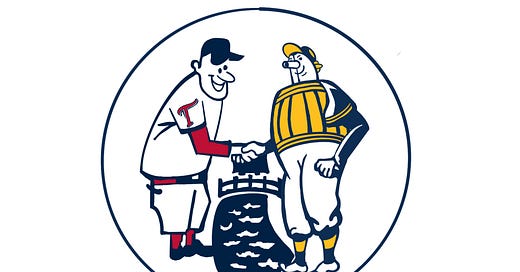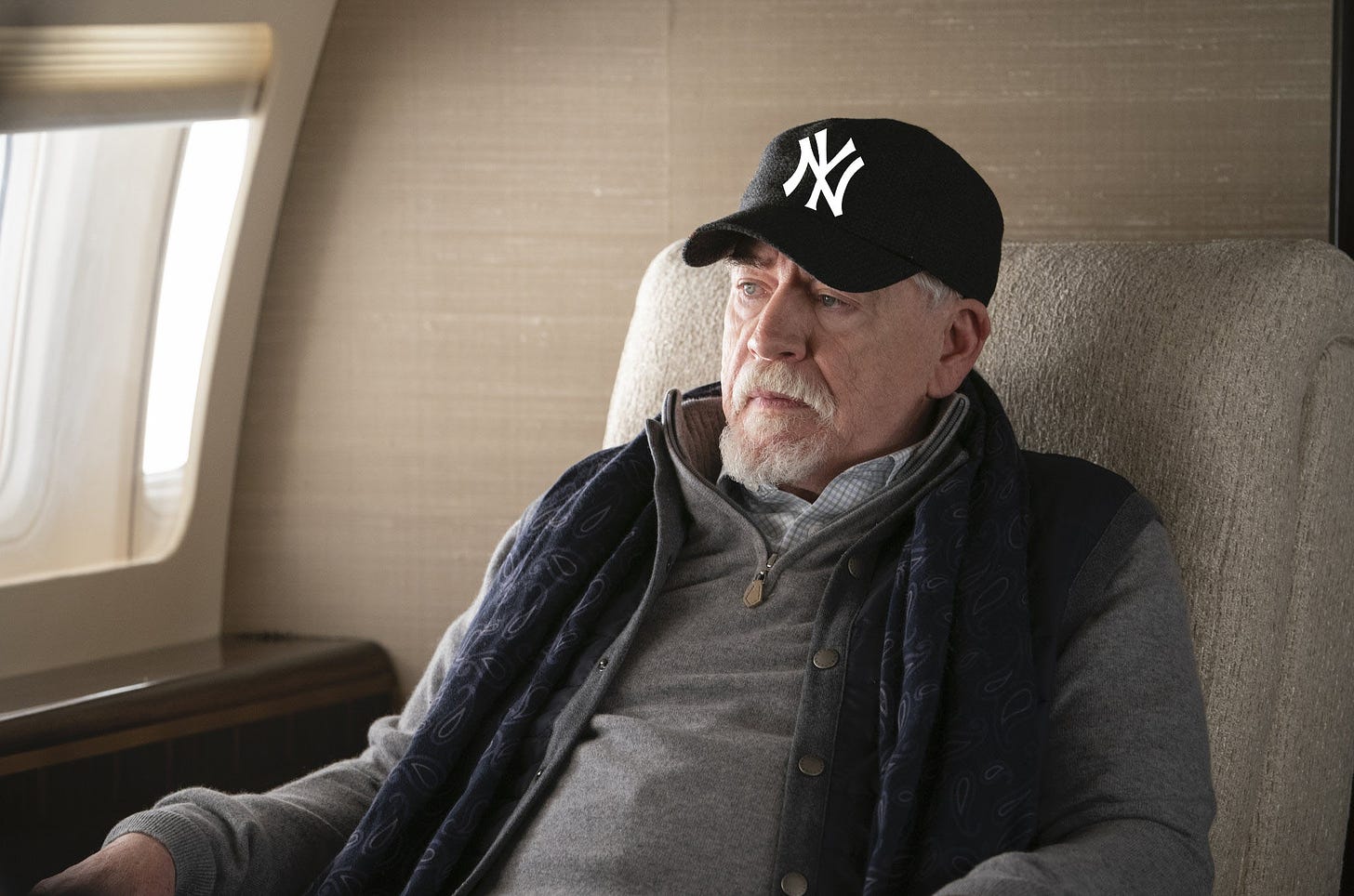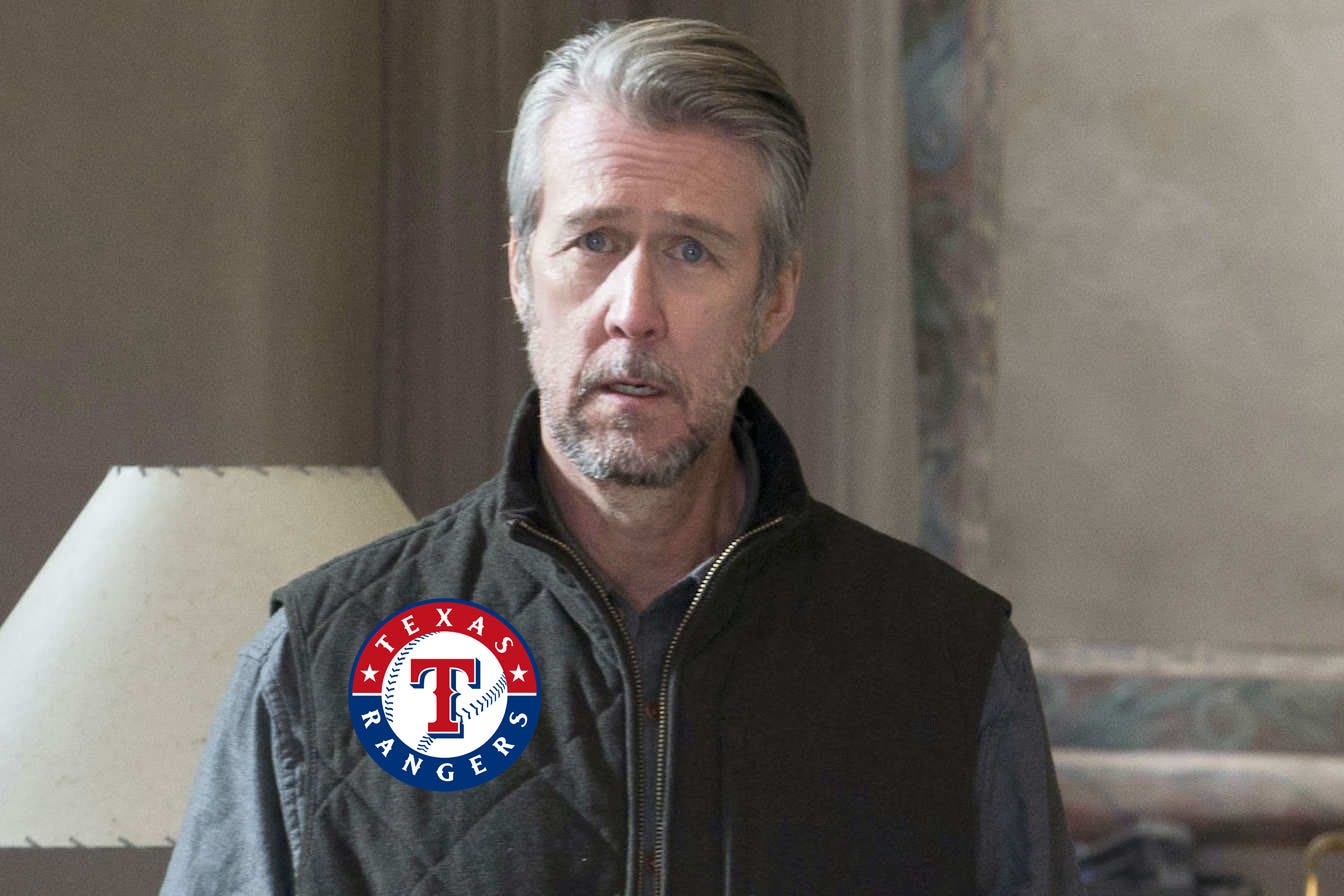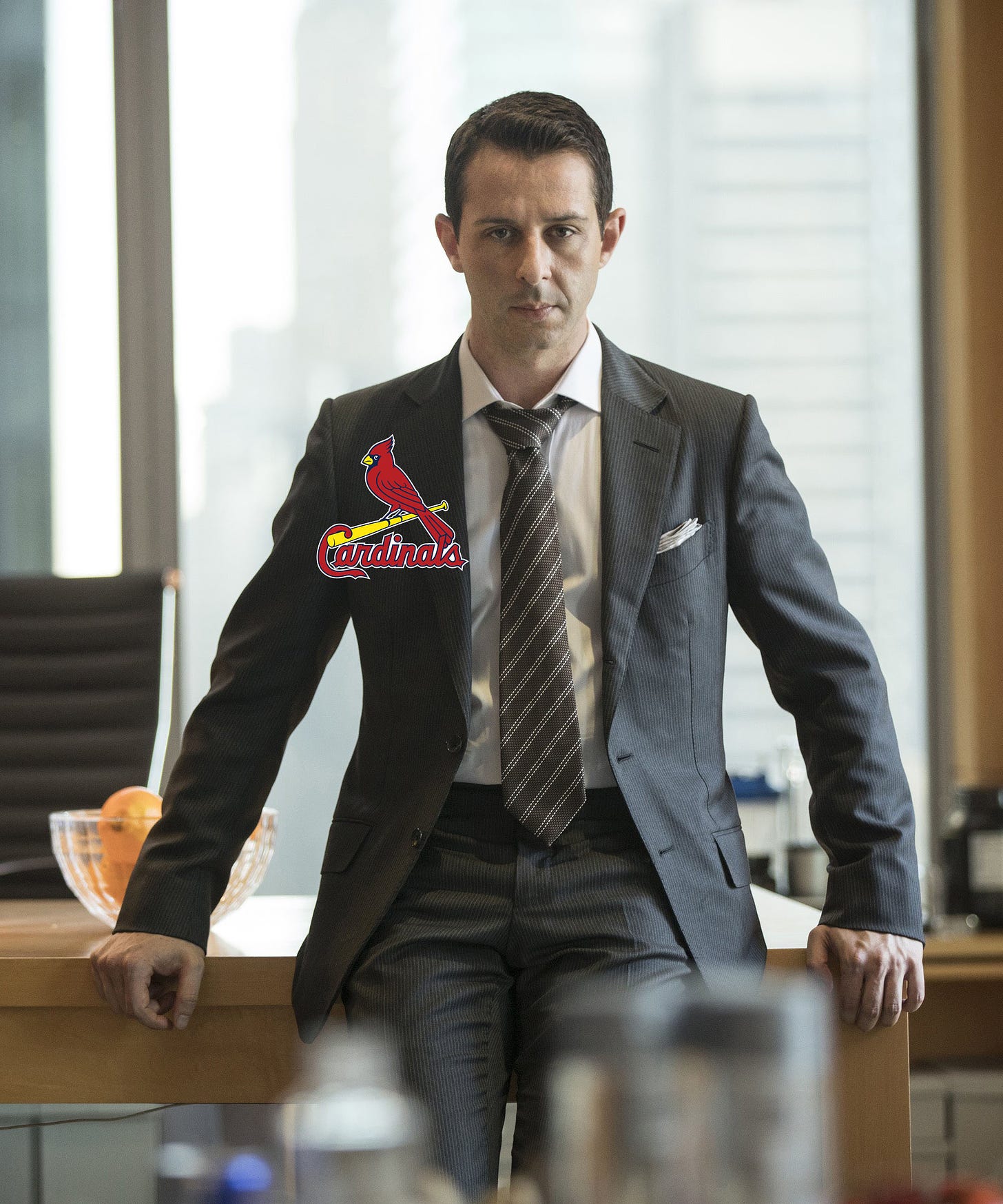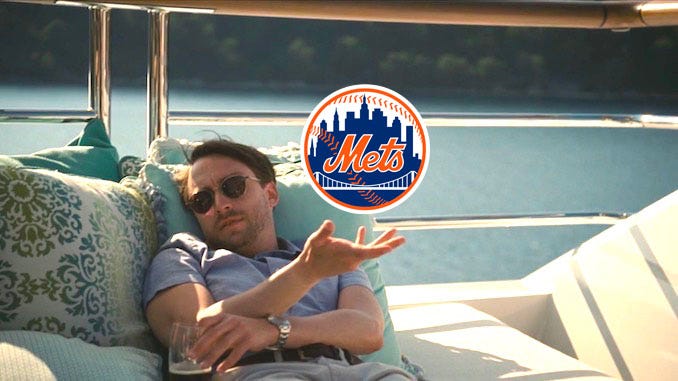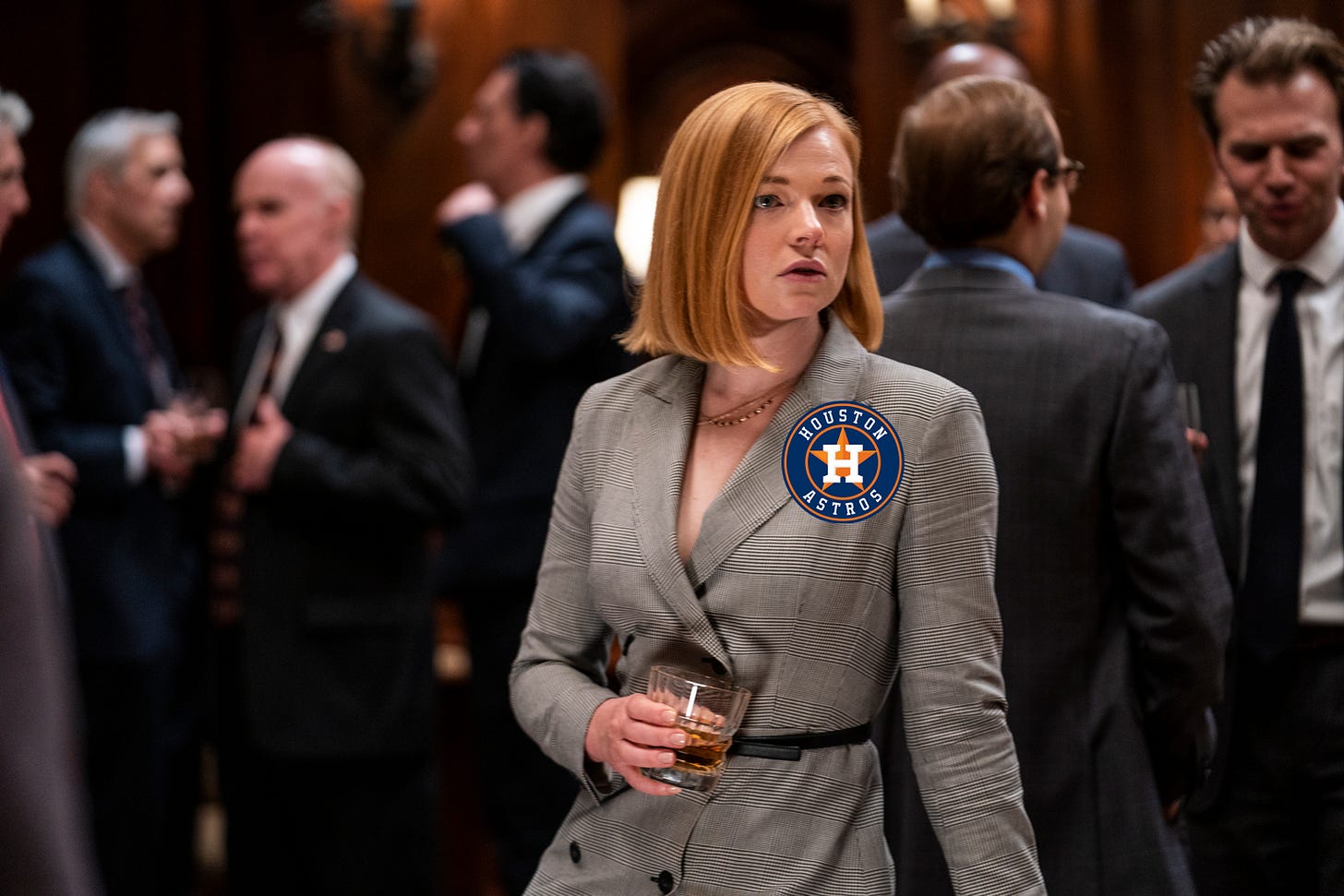Buck yeah! Buxton is back, and so is our offseason wish list
Also, we assign MLB teams to characters from the HBO show "Succession" for no apparent reason.
Happy Wednesday morning, everybody. It’s time to chat about our two favorite baseball teams.
Let’s converse.
Let the Buxton text messages roll on
~ Jake
“BUXTON.”
The oft-discussed Rich People Conversations group chat has received that text numerous times. It’s often immediately after some ridiculous diving catch or a mammoth home run that a person that looks like an athletic string bean shouldn’t be able to hit. It’s also popped up when news breaks about a hit by pitch to the hand or a zero-to-sixty-to-zero run into the outfield wall.
Sunday afternoon, I got another text like that. Fortunately for my heart and unfortunately for my pants, it was the best news.
The Twins signed their former No. 2 overall pick to a seven-year, $100 million extension Sunday, as reported by Ken Rosenthal. The excellent centerfielder will receive $9 million in 2022 and $15 million per season from 2023-2028, according to this MLB.com report. He also will receive a variety of bonuses based on MVP finishes and the pact features a full no-trade clause.
There are few people who doubt Buxton’s ability when he’s on the field. Aside from strikeout issues, he’s about as good as it gets in the bigs, period. The problem, of course, is his availability. He played 28 games in 2018, 87 in 2019 and 61 in 2021, suffering from migraines, a fractured toe, wrist strain, wrist contusion, concussion, shoulder subluxation, hip strain and hand fracture. He’s been far from the pinnacle of health.
That injury history is baked into the extension, though. Of course, $15 million per year seems like a lot, but that’s well-below the cost of a win on the open market. In 2020, Craig Edwards wrote for FanGraphs about the cost of a win in free agency and he found that it was about $8.0 million/WAR (or win above replacement). Based on that math, Buxton’s 4.2 WAR in FanGraphs could be worth north of $30 million per year, and that’s just in 61 games. The Athletic’s Aaron Gleeman encapsulated it well:


.
Let’s get this out of the way right now: I’m absolutely in the bag for Byron Buxton, so I’ll acknowledge I’m biased. With that said, this feels like a giant win for the Twins. There are only a handful of guys in the bigs who are in the realm of Buxton’s abilities, and they have last names like Trout, Betts and Acuña. Trout has the largest contract in baseball history, averaging $35.5 million per year, and Betts isn’t far behind at $30.4 million per year. Minnesota gets Buxton at half that cost largely due to that injury history. For comparison, Ben Clemens at FanGraphs estimates Kyle Schwarber will get $15 million per year for four years. Kyle Schwarber.
If Buxton is on the field, he’s a huge contributor, almost regardless of how he’s hitting. At his worst, he’s an elite defender who can occasionally run into a homer and at his best, he’s a unicorn. Just look at this graphic:

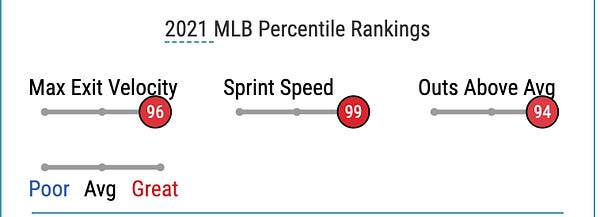
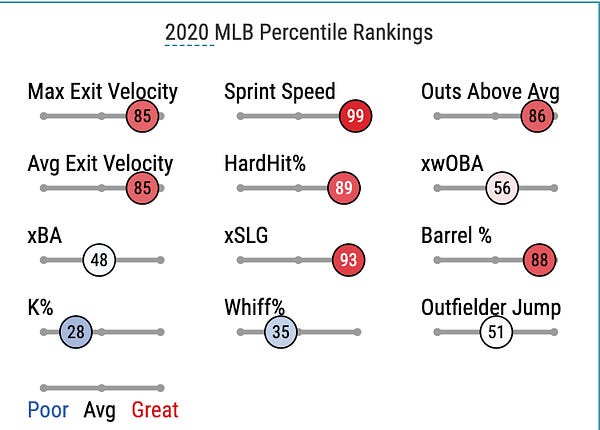
.
Buxton will be 35 when this contract expires. Of course there’s a possibility that he’ll miss a ton of games and be a mediocre corner bat by the time this deal is up. And if that happens, they’re only out $15 million per year--that’s a totally reasonable amount to spend on an outfielder. It’s also possible that he’ll log multiple 6+ win seasons and be the face of the franchise throughout, in which case they’ll come out way ahead.
It’s hard to believe Buxton couldn’t have done better had he tested free agency this time next year, but he made it clear to Do-Hyoung Park of MLB.com before the trade deadline that he felt at home with the Twins: “The Twins drafted me, so this is where I want to spend my career. There’s not too much i can say for anybody else, but for me, I know where I want to spend my career.”
Now I’m crying.
Making an offseason list; might check it twice
~ Curt
With the MLB lockout set to begin, let’s get one thing out of the way first.
The Brewers were never going to be players before the CBA expired this off-season. That wasn’t going to happen. None of the following will be relevant until the players and owners come to a new agreement, whenever that is. At that point, a classic Dave Stearns wait-and-smell-the-desperation-in-agents off-season will meet a condensed schedule, a combination with more intrigue than anything since Bon Iver featured on a Taylor Swift track.
When that day comes and baseball exists again, here are the preferred targets of RPC, sorted by high-end to marginal adds.
The big boys
The Brewers have made a handful of big splashes in free agency under the Stearns (and, let’s be honest, Attanasio) braintrust. Lorenzo Cain getting five years and $80 million is the top dog. Yasmani Grandal got the big bucks as far as annual average value goes, with one year at $18 million. You could toss Mike Moustakas in that mix, as well, I suppose but I have a spicy take and it’s that Moustakas fits more in the Avisail Garcia category of signings than the Yazzers.
The time is ripe for Milwaukee to jump back in the waters of paying for a true impact bat. The roster as it stands is devoid of such a player aside from Good Christian Yelich, but it will have been 30 months since we last saw him come Opening Day 2022. They have three years remaining of team control on their top three starters and also have the likes of Josh Hader, Devin Williams, Adrian Houser, Eric Lauer and Aaron Ashby under control. Their average payroll commitments over the past six years, with record revenues and four playoff appearances, has been smaller than it was over the previous six.
Enough pontificating. The Brewers need a bat. You know this. I know this. Here are some of the best fits among the top options.
Nick Castellanos: In addition to all the memeing he would bring to the Brewers, the addition of a big power right-handed bat is something the team has missed since peak Ryan Braun, save for half a season of Jesus Aguilar and Keston Hiura each. Castellanos has posted a 126 wRC+ over the last four seasons. The Brewers could probably nab him for five years and $120 millions. They have been reluctant, however, to reach that length in contracts, and for a player with defensive problems and a qualifying offer attached, I struggle to see Milwaukee going for it.
Kris Bryant: File this one under “definitely not gonna happen” but there would be no more impactful player on the market for the Brewers specifically. You can start him in right field regularly and also move him around to left and third base. It would be surprising to see him get anything less than six years. The price tag will be high but make no mistake: it’s the type of move the Brewers should absolutely make.
Chris Taylor: Siri, show me 70 percent of Kris Bryant. Taylor can play any position, which pairs well with both the Brewers roster construction and Craig Counsell’s ability to mix and match. A reliable 2.5-3.5 WAR player may not be exactly the impact bat the Brewers but it’s a realistic price range for one of the better players on the market.
Second tier
Michael Conforto: The more I look at Conforto, the more the fit makes sense. A career 121 wRC+ corner outfielder coming off a career-low season that likely won’t command much interest in terms of a long-term deal? Throw a one-year, $19 million with a mutual option or two years and $35 million and get a player who has posted a wRC+ of 119 or higher in five of his seven seasons.
Nelson Cruz: The DH seems to be coming to the National League and Cruz is the biggest add in that category aside from Kyle Schwarber, who will actually probably be signed to play in the field even though he should just DH. Cruz will turn 42 next year and had diminished numbers in 2021 but still hit 32 homers with a 122 wRC+. One year and $14 million could do the trick.
Tommy Pham: Consider me not incredibly enamored with Tommy Pham due to declining defense, aging and an uninspiring offensive output the last two years, but at, say, one year and $9 million you can do worse than a career 12.5 walk rate and 15-20 homers. He could also DH but will the bat be good enough for that spot?
Let’s get realistic
Joc Pederson: If you can beat them, join them. That’s how the saying goes...right? His limitations as a player (read: he can’t hit lefties) will keep his price tag down, but the Brewers could stick him in right (or left) for 450 plate appearances and watch him post an OPS over .800 against righties. The man has one homer every 15 at bats against righties.
Clint Frazier: I’ve gone back and forth on this one 10 times already. He’s probably no better than Tyrone Taylor? But maybe take a shot on a bounceback contract, let the hair and beard flow unlike in New York and see what happens?
Jorge Soler: Soler is probably just a DH, but Milwaukee could do worse there than a guy who, outside a strangely poor first few months in Kansas City this season, has been a very good hitter. Will the playoff performance stock boost make his cost unreasonable?
Other options
The stable of minor league contract arms: You know the drill: every year, one or two guys the Brewers sign to a minor league deal ends up being a big part of the pitching staff. Some early options for 2022 include: Dylan Bundy, Mike Fiers, Jordan Lyles (you and I both know it) and Vince Velasquez. Maybe Chris Archer based on his last three years, but also someone will probably give him a big league deal?
Relievers: It’s next to impossible to peg down which relief arms will be added. The Brewers rarely spend much on the bullpen. Perhaps Joe Kelly could be a name. Steve Cishek is another fit. Daniel Norris on a returning deal maybe? Yusmeiro Petit?
Jon Villar: Can one of Stearns’ first acquisitions as GM come back home? Villar has gone from a super-high steals shortstop to a big question mark with the bat to a useful utility player. Perhaps the existence of Jace Peterson and Mike Brosseau on the roster would make him a redundant add but there’s a two-year, $14 million contract in there for him somewhere.
The bottom line
The best part of this all is I can’t think of a team whose free agent adds are harder to predict than the Brewers. it’s going to wind up with none of these guys even sniffing negotiations with the Brewers, isn’t it? Come on down, Brock Holt.
MLB teams as characters from “Succession”
~ Tom
I’ve been binge watching the HBO show “Succession” over the past couple of weeks. Needless to say, I haven’t been a productive human being since clicking “play” on the first episode.
It’s so dang good.
The show is about the Roy family, which owns the largest media and entertainment company in the world. We’re talking anything from television stations to newspapers to music studios to movies to theme parks to cruises.
It was all built by the father, Logan. Without giving anything away, the show is all about which of his four incompetent, screwed-up children will take over the company once he retires or passes away. It’s billed as a drama, but really, it’s a comedy. As we all know and probably learned the hard way ourselves, there’s definitely a theme of ineptitude in the real corporate world today.
Anyways, since the show is all I can think about and I have to write about baseball, I figured … why not combine the two?
Here is each member of the Roy family as an MLB team:
Logan Roy: New York Yankees
We’ll get the obvious selection out of the way first. Obviously, Logan is the hated Yankees because he literally built an Evil Empire. And everyone hates him. (For example, in Season 1 a protester throws a water balloon filled with urine at the old man.) I’m not saying I would throw a urine balloon at the Yankees if I had a choice, but I’m only not saying that because Alex Rodriguez is now the Timberwolves owner and my Puppies have won seven of eight games. Howl.
The only problem would be Roy would have to shave his old man goatee to keep up with the absurd company policy.
Connor Roy: Texas Rangers
The oldest of four siblings, Connor Roy is without a doubt the, um, least educated. At first he seems like a good person who cares about the environment and doesn’t want to deal with the family business, but then his idiotic nature emerges when politics get brought up and he thinks he’s a legitimate candidate for president.
The key term here is a lack of self-awareness. Just like the Rangers. Who does this team think they are? Texas has finished dead last in the AL West in three of the past four years. The Rangers lost 102 games last year, the third-most in franchise history. Instead of rebuilding, Texas shelled out $325 million to Corey Seager and $175 million to Marcus Semien in free agency.
You’ve got to love a team’s willingness to spend dough, it’s just easy to question if there’s an actual plan at Globe Life Field. Just like Connor.
Kendall Roy: St. Louis Cardinals
The best way to describe Kendall, next in line in the Roy family tree, is a wet blanket. He’s dull. Boring. Can’t hold a conversation yet thinks he’s entitled to run the company. Sound familiar, Brewers fans? He’s the Cardinals.
St. Louis swears by the “Cardinal Way,” which in recent years means nothing but trading for as many 35-year-old pitchers and players as possible. Boring. The Cardinals also continue to trot out the same catcher every year and are certain he’s deserving of a plaque in the Hall of Fame despite a career .733 OPS.
Roman Roy: New York Mets
Roman, who I thought was the youngest sibling before a Googling search told me he was a middle child, is wacky. He’s weird. Funny, but more fun to make fun of. He’s unpredictable yet you always know something will backfire in his plans. Sound familiar? LOLMETS. Do I even need to go into detail about why the Mets are dysfunctional? Just scroll through the tweets of owner Steve Cohen.
Shiv Roy: Houston Astros
The youngest of the Roy family, Shiv is the smartest. She forged her own path into a career in politics and can actually put a sentence or two together, unlike her three brothers. Often times the Roy family uses her wits and political background to shield themselves from scrutiny during several scandals. The Astros did the exact thing by hiring Dusty Baker. Houston was tired of being booed from the 2017 sign-stealing scandal, so it brought Baker into the clubhouse to clean up the team’s public image. The difference, I guess, is Shive is as evil as the rest of the family. Dusty just chews on toothpicks in the dugout.

